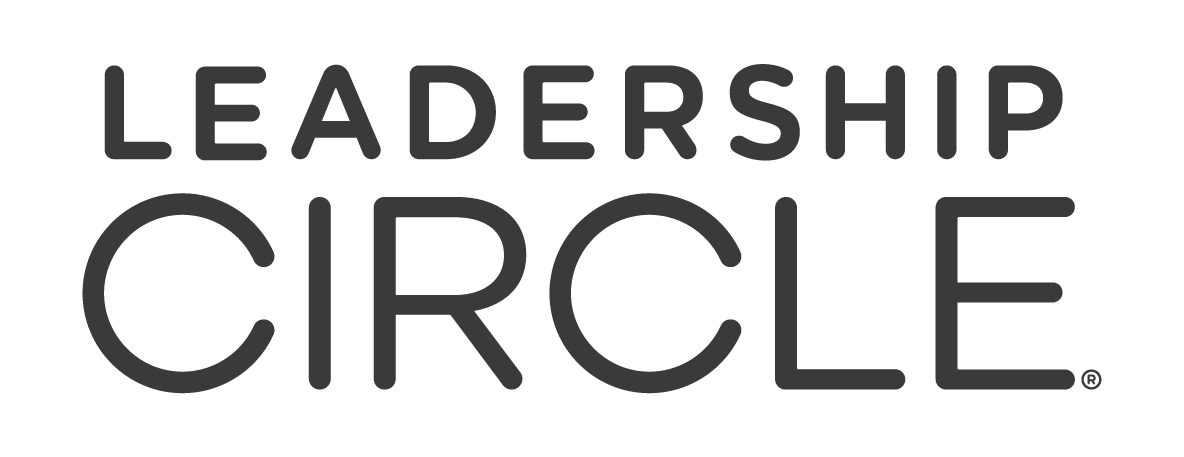Building Internal Capability to Facilitate Organisational Cultural Change
By Lisa Doig
Case Study: Building Internal Capability to Facilitate Organisational Cultural Change (Nordea Bank, Denmark)
Sometimes the best way to sustain long-term organisational cultural change is by building internal transformational capability to continue and extend the transformation initiated by consultants.
Building internal transformational capability within an organisation, in addition to, or instead of, using external consultants to bring certain skills, is a sound investment in the human capital of the organisation. Notwithstanding significant cost-savings, companies can gain a competitive advantage by building transformational capabilities that “stick.” Moving from Reactive to Creative mind methodology is essential for leaders at all levels of an organisation seeking a sustainable culture change.
According to 2016 McKinsey research, 70 percent of large-scale change programs don’t reach their stated goals, with commonly recurring issues including lack of employee engagement, lack of accountability, poor cross-functional collaboration, and poor management support. Significantly, sustaining a transformation’s impact requires a genuine shift in mindsets and behaviour—something that few leaders know how to achieve. [1]
Denmark-based Nordea Bank is one of the largest banks in Europe. Former Chief People Officer, Head of People, at Nordea Bank, Karen Tobiasen says that Nordea was aware of their transformation challenges of the past and were ready for a different approach.
For Nordea, the need for a culture change initiative with a focus on Leading with Values and Purpose was clear cut. However, the bank had invested in consultants in the past and felt strongly that often, these transformations had not been able to stick. Tobiasen believed the key issue in this failure was that the leaders were not able to hold the transformation and focus on the crucial human dimension, as they were so focused on the business and systems part of the transformation – the work they felt most comfortable doing. Needing long-term culture transformation that would stick, Nordea’s CPO concluded that building internal culture change capabilities would result in a more sustainable transformation in the long-run.
Nordea approached Australia-based culture change consultancy Corporate Evolution, along with other partners, looking for a bespoke solution. They wanted more of a co-creative approach with a focus on internal capability building, rather than the kind of off-the-shelf solution they had come to expect from larger consultancy firms. With a history in helping build internal capability for Culture Transformation as well as in delivering a renowned leadership transformation program “The Inspired Leader” across the globe, Corporate Evolution was excited by the possibility of helping to facilitate and co-create real change at Nordea.
Tobiasen was convinced that this values and consciousness approach – developing skills to move from the Reactive to Creative Mind – would create that integration between the human and business transformation that she was so passionate about helping to create in the bank.
Training Internal Facilitators to Lead the Transformation
Both Nordea’s Karen Tobiasen, and Corporate Evolution’s Lisa Doig, agree that the very act of training internal facilitators to lead Nordea’s transformation was critical to the success of the initiative. By focusing on building internal capability to facilitate the transformation, Tobiasen says, the organisation began to feel competent, rather than co-dependent. “The fact that we used our own facilitators throughout the program, trained, mentored, and supported by Corporate Evolution through the two-year period, meant that that collective feeling at Nordea was ‘We can do this.’ We felt ownership of the journey, and, because of this, it really felt sustainable.” We delivered an internal capability building program for four cohorts of Facilitators of Transformation through a program that included:
- A 10-day Forum-field-Forum Facilitator accreditation program
- Monthly 1:1 coaching
- Master classes for deepening and feedback; and mentoring through Nordea’s internal client projects
In his white paper Pathways to Partnership, The Leadership Circle’s Bob Anderson posits that, “historically, we have spent most of our attention on changing the system and relatively little on the profound personal changes required of people at every level. We have tried to change organizational culture as if it is somehow separate from ourselves.” [2] Anderson argues that the deeper work in a transformation is “discovering how we personally contribute to the very culture we are trying to change… (that) we are all carriers of the old culture.” Additionally, McKinsey’s research shows that a critical mass of 10-30% of pivotal influencers is needed to display new behaviours for any change to become self-sustaining and for organisational transformation to occur. [3]
Understanding this issue inspired Tobiasen to find passionate employees from all parts of the business to train as Facilitators of Transformation. She believes that the decision to train internal facilitators from across the organisation, not just from HR or Senior Management, was crucial to the project’s success. The main criteria for selection, Tobiasen explains, was that people had a passion for the Values and Purposed-Led Transformation and that they wanted to do something positive for the bank. They were courageous enough to understand that their own inner journey would define how they could help others and were prepared to do the deeper transformation work required of themselves first, to affect real change.
During the two-year program of internal capability building, Tobiasen discovered that staff was not only developing their facilitation skills, but those chosen to lead the change also naturally role-modelled changes in both mindset and behaviour, which helped to engage their colleagues in the transformation.
The result of training facilitators and change agents within the organisation to drive a Values and Purpose-led transformation were the values generated and subscribed as a result of Nordea’s journey, rather than a top-down diktat from Management.
Measuring Success
Walker and Soule[4] advocate that “culture change can’t be achieved through top-down mandates. It lives in the collective hearts and habits of people and their shared perception of ‘how things are done around here.’ Someone with authority can demand compliance, but they can’t dictate optimism, trust, conviction, or creativity.”
It was a measure of great success for Nordea’s internal capability building program, then that one-year into the program, it was evident that there was engagement across all levels of the business. Employees throughout the company were “leaning in,” and there was a waiting list of leaders wanting to work with the internal facilitators to transform their teams.
Tobiasen reflects, “I think my biggest moment was after one year when we had done a series of these leadership programs, I met a team of twenty leaders and two of the internal facilitators. And to come into that room and feel the energy and the quality of the conversation, the honesty, the authenticity, it was just such a different space. So not only had we, of course, developed a lot of leaders but the whole energy, the whole consciousness, had moved in the company. It was obvious.”
Since Nordea underwent their transformation, they have been named Best Investment Bank in Scandinavia (2018) by Global Finance and was recognised as IT Innovator of the Year at the 2018 Global Retail Banker Awards. These awards are widely considered throughout Nordea to be evidence of the success of the bank’s ongoing cultural transformation.
Advice to Other Organisations
One year on from the intensive leadership transformation program of the top 300 leaders, Tobiasen and Doig are incredibly positive about Nordea’s decision to build internal capability for their culture change journey. Corporate Evolution continues to mentor and support the Nordea transformation team and are developing new bespoke programs to cater to the growing needs of the bank.
Having ridden the highs and lows of the transformation, Tobiasen’s advice to other organisations looking to embark on this journey is to create a genuine space for co-creation. “Do not assume that you know,” she advises. “Always start by listening to the organisation, the organisation is much wiser than you would ever imagine. Start listening, I think that was our learning, we listened to the organisation very carefully. They told us what they needed to unlock. Then we just had to tap into that and fulfill those needs.”
Doig points out that there were several critical success factors in the Nordea project that must be in place for a culture change to be both successful in the short-term, and sustainable in the long-term. These critical success factors are:
- High-level commitment to the project. Nordea Bank was committed to investing in the deep transformation work for facilitators, and to hold the integrity of the work. Over the two-year period, the bank went through many ups and downs resulting in a great deal of cost-cutting, but remained committed to the culture transformation work. C-suite and leadership commitment was integral to this.
- Expect highs and lows. Ups and downs are part of any business cycle, as well as any transformation. When both business and the transformation hit a rough patch, it’s important to understand this is normal and to have faith in the process.
- Flexibility. Nordea found the way that the transformation would work for them in the short and long-term was working with a leadership development partner who valued flexibility, with the ability to co-create based on their needs.
- Adherence to, and expectation of, high-quality standards. To build internal capability, to bring a function in-house, need not be synonymous with accepting lower standards. In training Nordea’s internal facilitators, Corporate Evolution demanded the same high standards they expect from their own consultant team. Not only did this adherence to high standards ensure the client received top quality facilitation, it also gave the internal facilitators’ confidence to know that, being trained to such a level of competence, they were also highly capable of delivering the work to senior leaders.
- Listen in the spaces. Corporate Evolution trained the Nordea internal facilitation team in the art of deep listening, listening in the spaces. As Tobiasen suggests, listening very carefully to what the organisation is telling you (and what they are not saying) will tell you what you need to know to start and manage the transformation process. Don’t assume that you know!
Be the change
Walker and Soule implore us to remember that “change only happens when people take action.’[5] Committing to a huge project, such as building internal capability for an organisational transformation, can be daunting. It requires a significant commitment of time, resources, funding, and dedication to the work.[6] But for long-term, sustainable culture change that employees can truly believe in, it may be a wise investment. The Leadership Circle leaders, Bob Anderson and Bill Adams, remind us that “each time we step up in life or leadership to a new aspiration or vision, we face fear. Our biggest wants are met with our biggest fears. We either move through fear toward our passion, or we slowly and inexorably die.”[7]
Nordea Bank’s Karen Tobiasen suggests that “the main work is actually to understand that if you don’t like where the organisation is right now, and you want more out of it, you’re the only one who can change it. So, be the change you want to see. That’s the essence of it. The more equipped, the more conscious, the more evolved we are as leaders, the better the transformation will be. It’s that simple. So, this is where the journey starts, right here.”
[1] Michael Bucy, Adrian Finlayson, Greg Kelly, and Chris Moye, https://www.mckinsey.com/industries/retail/our-insights/the-how-of-transformation
[2] Anderson, Bob. Pathways to Partnership Whitepaper, May 2016, p.3
[3] Feser, C., Rennie, M., & Chen, N. Leadership at Scale. Hodder & Stoughton, 2018.
[4] Walker, B., & Soule, S, Harvard Business Review June 20, 2017, https://hbr.org/2017/06/changing-company-culture-requires-a-movement-not-a-mandate
[5] Walker, B., & Soule, S, Harvard Business Review June 20, 2017, https://hbr.org/2017/06/changing-company-culture-requires-a-movement-not-a-mandate
[6] Dean Anderson, Beyond Change Management, 2001 p. 108
[7] REACTIVE TO CREATIVE LEADERSHIP Bob Anderson & Bill Adams, p.2






